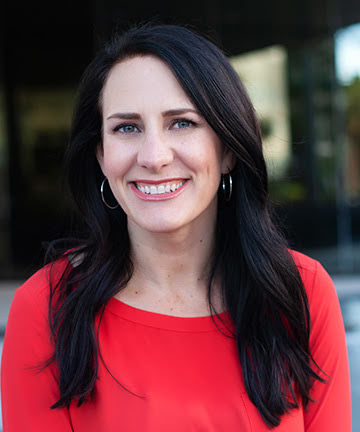In celebration of Women’s History Month, we are honored to launch “Spotlighting Women in Advisory Practice,” a blog series featuring four women who have transformed their accounting businesses with advisory services. These CPAs have moved beyond being solely tax providers, expanding their relationships with clients to become true business partners.
Sandy Heit’s path to owning her own accounting firm was a bit unconventional — and ultimately involved her love for photography.
After completing high school and a less-than-fulfilling stint in retail, Heit decided to attend college. She pursued accounting due to a combination of a love for math and heeding her mother’s advice to have a stable job. Upon graduating, she worked at Deloitte for four years, mostly in tax, which included a six-month rotation in auditing. Then she joined Moss Adams, an accounting firm that primarily works with retail, which provided her the opportunity to learn the non-technical aspect of the profession. However, her long commutes became tiresome, and so she moved to HCVT, another larger regional accounting firm.
Heit’s career path in accounting could have easily remained in one direction, but along the way, a new love emerged — photography.
After being in accounting for nine years, Heit says she was open to exploring something else. When she hired a photographer to take pictures of her then two-year-old daughter, she said she became “just obsessed with the whole process.” She started her photography business in 2007 and built a client base while still doing accounting as her day job. After some time, Heit left HCVT to become a full-time photographer, allowing her the flexibility to have the work-life balance she desired. Owning a business provided many lessons which she would utilize in her life to come.
Creating a CPA firm around flexibility
Heit describes how a former group of colleagues had started an accounting firm around the same time she began her photography business. The firm had grown significantly, and her former partner offered her a position.
“Initially, I was working part-time at the firm and still doing photography part-time,” Heit says. “However, I discovered I really loved being back in accounting, so I shut down my photography business.”

Heit was at the firm for a few years when a recruiter she knew personally reached out with an opportunity to head up an accounting practice for a start-up family office for a high-net worth individual. “My gut told me it was the right thing to do, and it was a great learning experience,” she explains.
While she liked her job, Heit says she knew that eventually she wanted to work for herself again. Reflecting on her career during another long commute for the new job, Heit says she realized that she wanted to start her own boutique accounting firm that incorporated the best practices she had learned over the years.
Her goal was to focus on strategic tax planning and compliance for small business owners, as well as providing a workplace where women could have the work-life balance she lacked at other accounting firms. Initially, she worked as a contractor for a former colleague, and by the fall of 2017, she launched her own firm, ModernCPAs. The launch gave Heit the opportunity to create the kind of firm that worked for her lifestyle, as well as service clients who were similar to the small business owner she was as a photographer.
“I wanted to build and work and employ [women] that are moms,” she says, adding that she wanted to enable a work environment that was flexible and creative that allowed workers to work “on their own time.”
 |
Report QuizThomson Reuters Advisory Report Quiz
|
Advisory services — “That is what it’s called”
Throughout her entire accounting career, Heit touched aspects of advisory services — not in the iteration she uses now, she says, but as a service provided mostly for free to clients. Based on her experience in working at other accounting firms, Heit had ideas on how she would best like to service her clients, work efficiently and effectively, and embrace technology.
She purchased an advisory-centric content and consulting solution that “completely transformed her practice,” she recalls, adding that she was very nervous when she first pitched the idea of an upfront advisory fee to a client. “The program had a formula for how to deliver advisory services, provided customizable content to deliver to clients, and had the ability to articulate the value we are providing,” Heit explains, adding that before long, she was requiring all new clients to start with an advisory services package.
As Heit continued with the new solution, she discovered many of the services she offered could be more strategic and monetized. And while moving into an advisory practice was not completely brand new for her — she already had a few clients on monthly retainers instead of the pay for service model — she soon decided it made the best sense to move her entire practice to advisory services.
Although Heit felt some trepidation in making the change, she felt it would clarify the kind of client she wanted to work with — individuals interested in partnering with her practice. It would also give her the chance to foster a symbiotic relationship with clients that would allow her to guide their business decisions regarding their tax situations.
As a woman business owner, Heit offers her clients not just her tax and advisory expertise but her understanding that comes from her personal experience as a mother and a small business owner.
“One of the biggest reasons I started my business is because I made a ton of mistakes with my photography business, and I want to help business owners not make the same mistakes I did,” says Heit. In addition, she wanted to educate and empower clients on the financial aspects of their business to become more successful.
“I also have a deep passion for helping women entrepreneurs,” she adds. “Because I know firsthand the limitations that we tend to put on ourselves.”
Read the Spotlighting Women in Advisory Practice blog series to find more success stories like Heit’s, then get started on your advisory journey with Practice Forward.
 |
How women can confidently and successfully build an advisory practiceHear from experts who have spent time with female-owned and operated firms positioning themselves for long-term success with an advisory-centric business model. |










